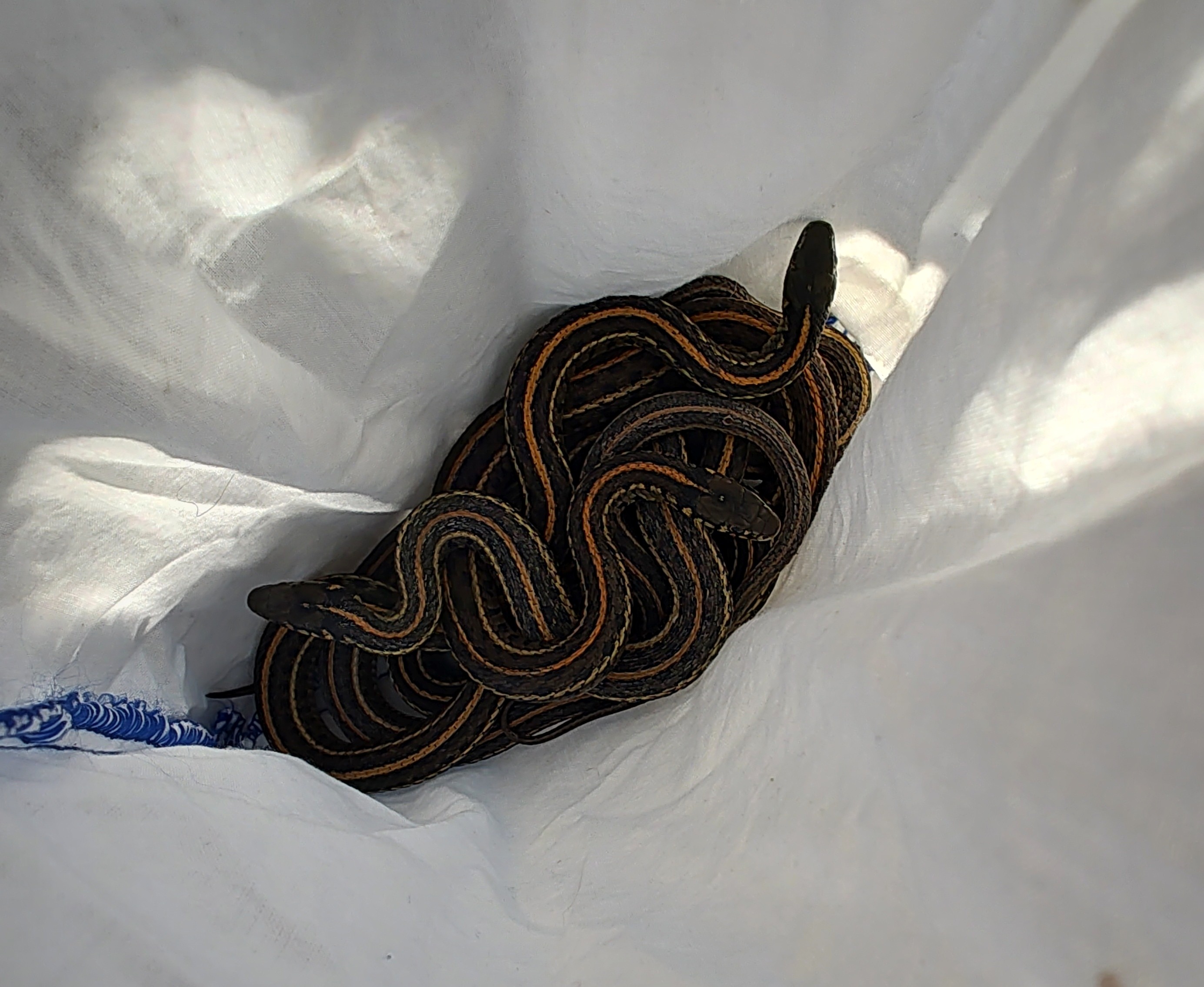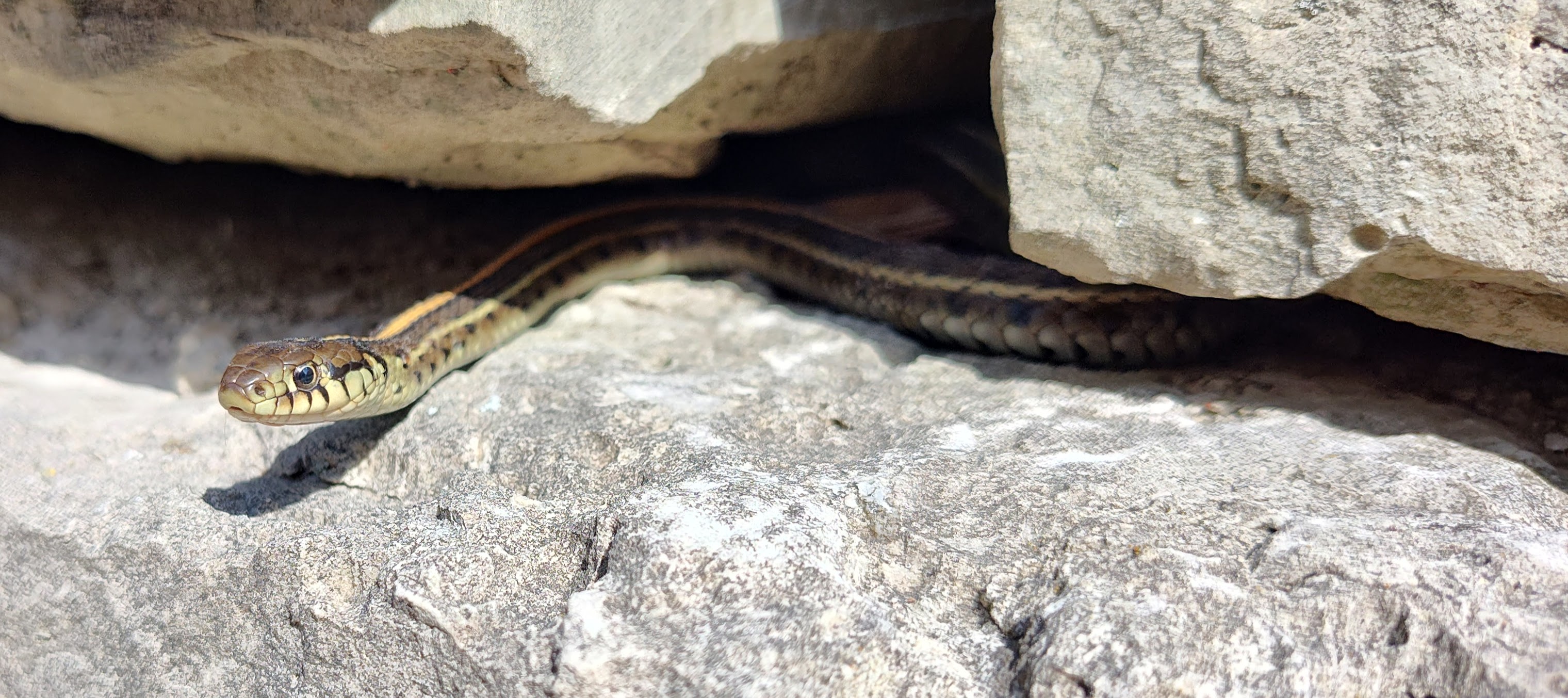The Life of a Gartersnake
Published:
Reptile species such as the Plains gartersnake (Thamnophis radix) live quietly among us. From suburban backyards to university campuses, these adaptable snakes offer unique insights into how wildlife is responding to ongoing environmental change.

A Snake in the Hand: Field Herpetology
This spring, I had the opportunity to serve as a Teaching Assistant in the Herpetology course at the University of Illinois. For many of the undergraduate students, it was their first time holding a living snake and their first exposure to hands-on field ecology.
As part of the course, students designed and carried out small-scale research projects focusing on this locally common, but often overlooked, species. These field studies were conducted right in the heart of campus, along the edges of the Boneyard Creek.
Ghosts of the Prairie: A History of Boneyard Creek
Winding through the center of Champaign-Urbana is the Boneyard Creek, a 3.9-mile long tributary of the Vermilion river. The creek’s origins predate not only the University, but the establishment of the town itself (1). Long before academic buildings and traffic lights, this creek meandered through tallgrass prairie and a forest known as the Big Grove (2), part of a landscape inhabited by Indigenous peoples of the Potawatomi, Kickapoo, and Illini. The creek’s unusual name dates back to the 1800s. During a harsh blizzard in 1836, many animals sought shelter in the protected ravine and surrounding prairie marshes (2,3). Tragically, many did not survive, and their remains were later discovered by settlers. When the area was drained in 1865, the bones of bison and other mammals were unearthed, alluding to the once-vast prairies that blanketed the region.
A Living Laboratory
Today, the Boneyard is bordered by sidewalks and urban infrastructure. However, if you crouch down along the grassy banks or peer between the rocks of the creek’s terraces, you might spot a flicker of movement- the coils of a gartersnake.
The Plains gartersnake (Thamnophis radix), a remnant of the prairies, has found a way to persist in this transformed environment. Emerging from overwintering in early spring, the snakes begin to forage, mate, and bask along the creekside.
During our fieldwork, we carefully captured individual snakes to record key data: sex, body length, mass, presence of parasites, and body condition. Some snakes showed the marks of survival; one older male appeared to have survived a bird attack, the healed marks of its talons still wrapping around his body. Others weren’t as lucky; several were found dead, the result of encounters with lawnmowers and the trappings of litter.
In 2022, a local biologists discovered a gartersnake attempting to swallow a rubber earplug (4). Fortunately, the snake was safely rescued and released. However, the incident highlights how even small acts of pollution can have life-threatening consequences for local wildlife.
By studying the lives of these snakes, we hope to gain insight into how generations of snakes are surviving in an altered landscape. Working in small teams, herpetology students used observational surveys to document the snakes’ microhabitat preferences and optimal basking temperature windows. They developed geographic heatmaps to show areas of high snake activity along the banks of the Boneyard and estimated trends in emergence timing between male and female snakes.
These kinds of student-led projects offer more than just academic experience. They cultivate a deeper appreciation for native biodiversity, and for the resilience of species like the Plains gartersnake that persist in the face of ongoing fragmentation.

Scaling Up
Next year, we hope to take our research further by implementing a mark-recapture study. This approach allows researchers to track individual snakes over time by applying a unique, non-invasive mark to each snake and collecting genetic material through small tissue samples. With this data, we can estimate population size, map genetic diversity, and even begin to understand the mating systems at play within the population.
Despite decades of isolation, this fragmented population continues to persist along the banks of the Boneyard. These snakes offer a compelling case study in adaptation and a window into how native species continue to navigate the pressures of urbanization.
The gartersnakes of Boneyard Creek are a reminder of the wildlife that still dwells among us, even in the midst of a sprawling campus and busy downtown. What we learn from this humble species may help shape how we conserve biodiversity in a changing world; not only in wild spaces, but in the everyday environments we all inhabit.
